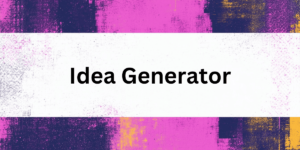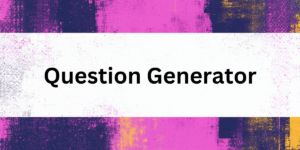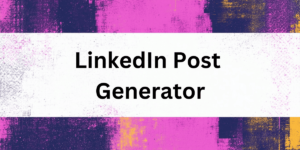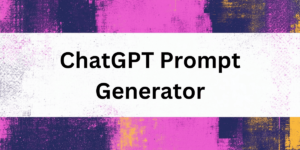History – what a topic. You can get right on that, can’t you? But stop! Before you embark on your next masterpiece, there are a few things to keep in mind. In this blog article, you’ll learn all about building a story, exciting ideas, and more.
What is a story?

The definition of story is vast and can encompass many different types of narratives. But basically, a story is an account of events that happened – whether fictional or true. In a good story, readers should be drawn into the action and sympathize with the protagonists. Stories can be told in different ways. They can be presented as novels, short stories, poems or even comics. There are no limits when it comes to design. The only important thing is that the content is well thought out and offers something to the audience – be it entertainment, information or both!
Here are 10 types of stories:
- Fairy tale
- Say
- Myths
- Legends
- Fables
- Parables
- Short Stories
- Novels
- Narratives
- History Collections
Structure of a story
A story usually has a beginning, a middle, and an end. The beginning should lead readers into the story and give them a sense of what it’s about. The middle section is the main part of the story, where the plot moves forward and the tension builds. The ending is the climax of the story, where all the threads come together and the problem is solved – or not.
First of all, you need to think about what goal the story should fulfill. Do you merely want to entertain, inform or instruct? The style is then chosen according to this: relaxed and humorous tone for entertainment stories, factual and clear expression for information stories, and a serious and emphatic style for instructional stories. Background information on the subject matter is also important; the more, the better. Meaningful examples can make information more vivid; this way, readers can better understand what it’s all about. Personal testimonials also convey closeness and credibility to the audience. Last but not least, it is advisable to end the story with an uplift – such as a positive message or hope for improvement. This keeps the audience confident and motivated.
Writing history: Here's what to look out for

- Write about something that interests and excites you. If you’re not intrigued by the topic, readers will be too.
- Find a unique angle or point of view that makes your story interesting. Make sure your story offers something people haven’t read or seen before.
- Focus on building the plot and plan each step in advance (you can always change this as you write). A strong plot holds the reader’s attention and keeps them excited until the end!
- Use vivid language with images in your head – the more vivid the better! Bring your characters to life and be creative in their description and dialogue – realistic is boring!
- Stretch the bow further than usual; expect the unexpected from the unexpected! Of course, you should think about all possible twists/surprise moments beforehand.
- Refer to other works for inspiration, but avoid plagiarism – use other work as a guide only. Be aware of what elements work for certain genres.
What should you avoid when writing a story?
If you want to write a story, you should avoid some mistakes. First of all, it is important that the story has a clear focus. Many amateur writers try to cram too many ideas into their work and end up with a cluttered and backwards story.
Also, the opening and climax of your story shouldn’t be too similar – otherwise you run the risk of it becoming boring. It is equally important to give the reader enough time and space to empathize with the characters. So, if you start over complicating your characters right from the start, or even go on a confrontational course, you don’t give the audience a chance to get to know them and build up sympathy for them. Here you can connect patchwork stories.
Writing history | finding ideas with neuroflash
If you’re looking for a story that will captivate you and hold your attention, you should think about what goal you want to achieve. Most people want to accomplish something in their lives, and that’s what the best stories are about. Choose a point of view to stick to and provide the reader with background information to support your thesis. Through a personal story, you can prove to the reader that it is possible to achieve their goal. Finally, you should end on an upbeat note to keep the reader motivated to read on or move on.
These days, you can craft your own stories with useful tools like neuroflash that can help you jumpstart your writing. To do this, first write what your story is supposed to be about and the intention behind it. Then click on Create.

In just a few seconds, the AI text generator will create a text for you from your given keywords.

If you have already written your own story, but are stuck, neuroflash can help you in this case as well and pick up where you left off. To do this, simply add your story to the writing field, highlight it, and click Continue. The magic feather then takes care of the rest. Try it out right here.
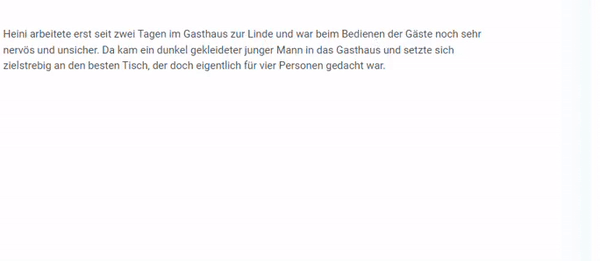
Alternatively, you can use the freestyle tool to search for a good story.
Story writing | ideas for different genres
Ideas for a novel
- A woman who falls in love with a man who cannot love her.
- A man having an affair with a married woman.
- A couple who meet again after many years and realize that the feelings are still as strong as they were then.
- A woman who loses her husband in a car accident and is never happy again after that.
- A woman who has a secret and is afraid that it will be discovered.
- A couple that breaks up but can’t quite let go and keeps getting back together.
- An unhappy love story in which there is no happy ending after all.
Horror story ideas
- A family moves into a new house, only to find out that it is already inhabited by demons.
- Even after a town recovers from a zombie epidemic, the madness is still in the people – and the undead are coming back.
- Children disappear without a trace from their beds at night, and parents must face the horror of what turns out to be child soldiers working for an evil king.
- In a remote village lives something in the forest that hunts people.
- One day, everyone awakens with supernatural powers – but they soon realize that this gift is anything but good.
You can find more ideas about Mystery and Thriller here.
Ideas for creative fairy tales
- Rapunzel, in which she has to use her long hair as a weapon.
- Snow White and the Seven Dwarfs, which is about revenge.
- Rumpelstiltskin, in which the task is to master golden spinning.
Conclusion
Now you know more about the topic “Writing History | Ideas & More”. If you’re looking for story ideas, AI text generators like neuroflash can help. These generators are able to develop an action starting from a certain topic and write it down. This way, you can free yourself from research and brainstorming and focus entirely on writing.



